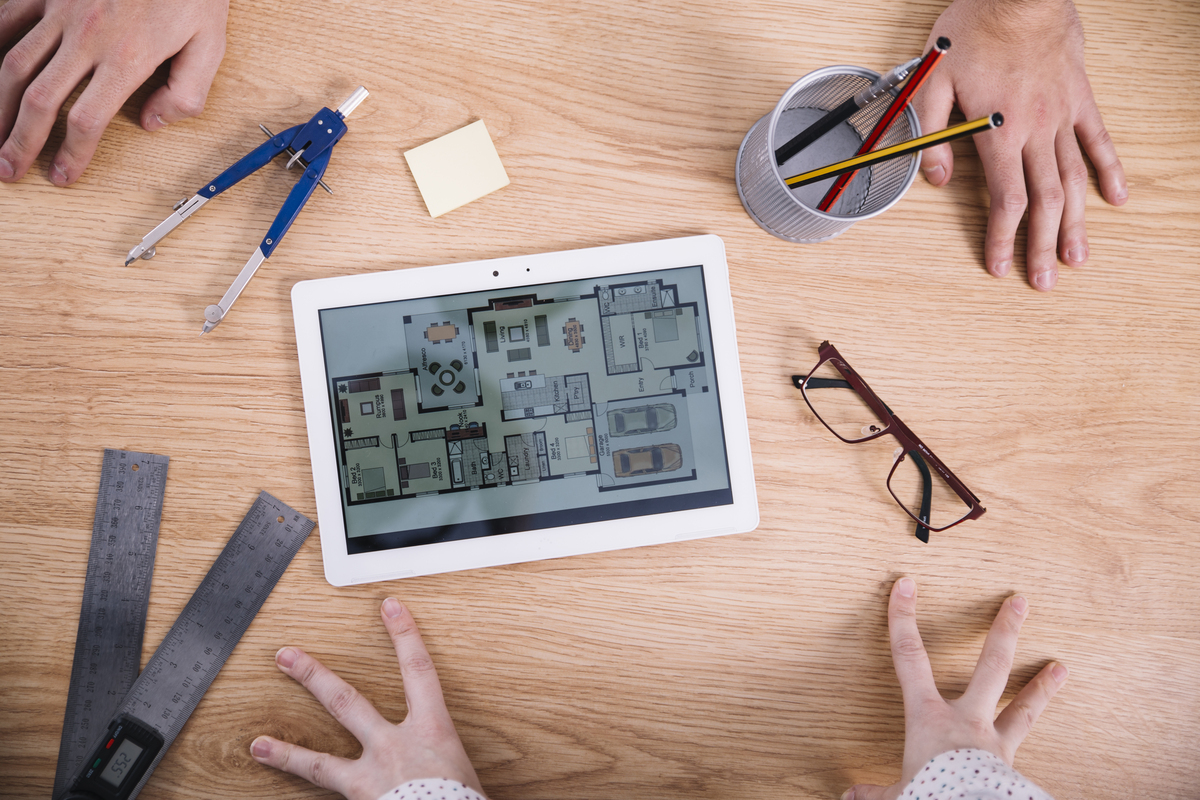The construction sector is poised for a revolutionary period propelled by the development of technology and an expanding world population. Several changes will change how buildings are planned, built, and run. The building industry is changing quickly in response to upcoming issues, such as the emergence of smart cities in the world and the future of smart construction the growing use of prefabricated materials, and cutting-edge technologies.
Among the global industries with the least amount of digitalization is the building sector. Notwithstanding the increasing complexity of construction projects, traditional business practices continue to rule the construction industry. Modern, complex projects with millions of components can easily entail thousands of choices and hundreds of vendors. Multi-party cooperative ventures are being driven by construction megaprojects.
Cutting-edge engineers and real estate developers create infrastructure and structures that are more technologically sophisticated, larger, and more sustainable than ever before while also trying to comply with strict environmental, health, and safety standards. Construction companies need to rethink and redevelop business procedures to make them more sustainable and efficient, as the industry is at a turning point.
For businesses to finish projects on schedule and within budget, they need to be nimble enough to react to events and innovate more quickly than in the past. They must increase productivity, efficiency, and quality control across their supply chains and operations to achieve this.
Table of Contents
What is a Smart Building?
Any building that uses the Internet of Things (IoT) to automatically regulate systems such as lighting, security, HVAC, electricity, ventilation, and air conditioning is considered smart. This implies that building management is possible at any time and from any location. With the abundance of data provided by smart buildings, decisions may be made more clearly, more efficiently, and ultimately more cost-effectively. All commercial buildings might eventually turn into the future of smart construction.
Suggested article to read: Construction HVAC Systems; Ultimate Guide for 2024
The Internet of Things, which connects everything to the Internet, makes smart technology conceivable in part. Consider things and gadgets like watches, laptops, and cell phones that can communicate with one another. The building may collect data, analyze it, and use it to make decisions about everything from staff tasks to energy savings by integrating these automated systems with connected gadgets.
Although the phrase “Smart building” has been around for a while, its definition has changed over time in tandem with technological advancements and shifts in how people utilize places. A smart building is, in a very general sense, one that makes use of technology to enhance efficiency and give its residents a secure, comfortable environment.
Suggested article to read: Smart Building Technology; 2024 Guide
Buildings have traditionally been rendered “Smart” through the integration of their disjointed, isolated systems. To find strategies for achieving particular goals like energy efficiency, carbon reduction, improved air quality, or asset performance, data is retrieved and evaluated. The capacity to scale across the organization is hampered by inherently inconsistent data, challenges connecting equipment from different manufacturers, and a lack of interoperability, even though this kind of strategy offers noticeable benefits at the building or campus level.

What Sets a Smart Building Apart?
You can have an experience in the future of smart construction that you cannot have in conventional commercial buildings. In contrast to a smart building, an ordinary building is unable to gather data from user devices, systems, services, and sensors. The building is more sensitive to the demands of the building manager and staff thanks to this data, which also makes the building programmable and configurable.
The way asset management is handled by facilities managers is changing as a result of this technology. With this information at their disposal, they can guarantee the tenants’ comfort, boost usage, and engage with employees more effectively. Imagine walking into an office building that comes to life!
Southwest Florida developers are hopeful despite supply chain interruptions, higher interest rates, and increased inflation faced by developers worldwide. Revenue is boosted by the region’s growing population as well as the influx of new businesses. Developers now have a great chance to add value to their properties and profit from the future of smart construction trends.
Suggested article to read: Top 13 Smart Building Companies in the World; 2024 Review
Trends Driving the Future of Smart Construction
Several important elements are coming together to hasten the creation and use of cutting-edge building systems technologies. The main ones include the necessity to control and minimize spending on energy, the growing emphasis on reaching net-zero emissions, and the significant adjustments to building use and occupancy patterns brought about by new hybrid work practices.
Innovations that enable the deployment of advanced IoT devices as well as the application of data analytics and artificial intelligence are responses to these difficulties. When combined, they produce a digitally empowered platform with the information and intelligence to respond to shifting circumstances and modify systems to preserve peak effectiveness and performance.
Suggested article to read: Zero Energy Buildings (ZEB); Comprehensive Guide 2024
1. Sustainability and Energy Efficiency in Buildings
Since buildings account for over 40% of global greenhouse gas emissions, there is a lot of potential for innovation and improvement in today’s buildings. We can drastically lessen our environmental impact by turning them into effective, sustainable environments. By improving sustainability and financial performance without compromising productivity or innovation, energy optimization offers a win-win situation.
When it comes to heating and ventilation, for instance, the future of smart construction may adjust its supply to areas where people are gathered and decrease it to sections that are empty or infrequently utilized. Smart buildings ensure that every area and occupant is adequately accommodated and that energy is only utilized where and when it is needed by modifying service delivery throughout the day.
By utilizing smart technology, a building can reduce scope 1 emissions by finding chances to switch out fossil fuel-driven equipment with electrically powered equipment. “Sustainability-focused companies have seen better financial results relative to their peers, even during the COVID-19 pandemic,” claims a recent Forrester Research research.
Additionally, the future of smart construction fosters an atmosphere that enhances experiences. For instance, stadiums are designed to provide fans with an engaging and enjoyable experience. When equipped with occupancy sensors, it uses less water and energy to achieve its goals. It improves fan experiences since, for example, the occupancy sensors that signal the HVAC system to reduce power can also notify patrons when there is a short wait for a cold drink.
Suggested article to read: Building Energy Optimization; Comprehensive Guide 2024
2. Space, Well-being, and Productivity
People’s needs must come first in the future of smart construction, yet they also need to be safe and comfortable. They enable people to flourish and make every effort to further the goals of the organization. The future of smart construction technology balances energy efficiency and occupant comfort by prioritizing factors like temperature and air quality while utilizing cutting-edge sensors and algorithms.
Buildings may fully utilize people, resources, and investments by utilizing technology to adjust to the changing demands of occupants and their surroundings. This is because a relaxed, healthy work environment encourages output and top performance and can aid in luring and keeping talent by making them feel more appreciated.
Currently, the future of smart construction protects tenants’ privacy while responding to their needs for security, energy efficiency, and climate management. Future smart buildings will use ever more sophisticated AI, smoother personal device integration, and digital twins as technology develops to provide more efficient, safe, and customized experiences.
The future of smart construction also makes it possible to quickly adapt to changes in use and rearrange rooms as necessary. To meet organizational and tenant needs while optimizing real estate footprint and related expenses, this kind of flexibility is required. Additionally, the future of smart construction technology can assist staff members in locating the tools they require to do their tasks, such as organizing meeting rooms, planning shared workstations, or locating quiet areas.

3. Security, Safety, and Compliance
Physical security in buildings nowadays is provided by manual procedures that have developed throughout time. Manual procedures can impede occupant experience since they are unable to keep up with evolving dangers. They also rely on people, which could be a source of failure.
The future of smart construction will automate physical security to provide better protection and less work for residents, allowing them greater mobility and peace of mind inside a building or campus. For instance, touchless access control allows doors to be opened for authorized users while blocking entry to the tailgate and alerting security staff in the event of a tailgate violation.
Peel-and-stick wireless sensors can enhance situational awareness by identifying sound threats like gunshots and shattering glass, as well as pinpointing the location. At a security checkpoint, automation can identify metals without a line and detect airborne toxins like anthrax. In the event of a fire, a safety threat, or a hostile act, the future of smart construction will employ occupancy information to assist in evacuation by giving the safest route to the closest exit.
Suggested article to read: Construction Site Safety: Comprehensive Guide 2024
4. Operational Efficiency and Equipment Performance
Buildings with increasing intelligence will be able to communicate with people and their surroundings to self-correct, self-heal, and self-notify. Additionally, businesses can increase automation in several different facilities and places. An ecology that was before controlled physically transforms into one that is dynamic, self-configuring, and independent. Manual operations like turning on chillers on a hot day to cool a huge room before an event will be replaced by intelligent automation.
Through unified management consoles, operations staff will have complete, real-time visibility into system operations, which will simplify operations management and increase productivity. When field service engineers have safe remote access to building systems, they will also be more adaptable and able to react faster. The ability to travel throughout the plant and connect from off-site allows maintenance staff to always have access to resources like equipment documentation and automated work orders as well as service tickets.
Suggested article to read: Automation in Construction: A Guide to 2024
5. Optimised Workflows and Supply Chain Management in Construction
Because smart buildings are networked areas, communication is improved. This affects teamwork and information exchange, heightens situational awareness, and gets around problems with immediate alarms.
The future of smart construction makes the best strategic decisions about productivity and efficiency, directs inventory and maintenance management, and assesses how well space is being used. Predictive analytics is fueled by data insights over time, which reduces uncertainty and creates more precise tactics.
Another essential element in the transition to automation and artificial intelligence is smart technology. This reduces the possibility of human error, promotes efficiency, and enables the greatest possible use of resources within processes. This type of management is equally applicable to individuals and entire supply networks.
The future of smart construction provides comprehensive information about how important gear is doing. The quantity of working hours, vibration and noise, pollutants, and even wear and tear are a few examples of these insights. The basis for precision predictive maintenance scheduling is laid by these insights. Reactive maintenance’s associated costs, disruptions, and negative effects on deliverables and reputation are therefore decreased.
Suggested article to read: What is Construction Workflow? Guide to 2024
6. Full Asset Visibility in Real Time
The simplicity of the future of smart construction is their power. Connected assets are tracked, monitored, and reported on by a single management system. For easier administration and better reaction, this offers a detailed perspective of full-site operations.
Cost savings, sustainability, and efficiency are a few of the main factors influencing the use of smart building technologies. But the short-, medium-, and long-term advantages reach deep into the seams of day-to-day operations.
Businesses can attain high-performance asset management skills by using smart building monitoring solutions, such as those from Smarter Solutions, to govern and streamline facility maintenance as well as coordinate and control multi-site operations. Accurate, low-admin compliance and accountability are further ensured via long-term, cloud-based reporting based on gathered data.
Future of Smart Construction Technologies
Some of the best smart building technologies that help create sustainable environments:
1. IoT
builders incorporate Internet of Things (IoT) devices into buildings, enabling them to track and manage variables like air quality and resource usage metrics that are critical to the inhabitants’ sustainability and well-being. Artificial intelligence backed by analytics can enhance a facility manager’s capacity to track performance in real-time and make decisions based on reliable data. For example, information from test dashboards documents the area’s current usage, the air’s oxygen to carbon dioxide ratio, the risk of infectious diseases, and other environmental data.
2. Automation
One of the key features of smart building technology is the interconnectedness of its basic systems. Intelligent technologies, such as building management systems, and real-time occupancy sensors, can be connected to share information and automate different tasks.

3. Digital Mapping and Digital Twins
Creating a 1:1 digital replica of the building—also referred to as the “Digital twin”—is one of the most accurate and efficient ways to use the future of smart construction technologies. Building managers get extraordinary control and precision through this method, which essentially produces a perfect digital replica of a building that improves itself in real time depending on data provided by the building’s physical twin.
Vera, a product of Resonai, for instance, creates dynamic cloud models that are updated often to incorporate fresh environmental knowledge. This enables the model to adjust to the actual changing physical location, enabling the development of incredibly accurate internal maps and navigation systems.
4. Fast and Secure Worldwide Internet Connection
The technology supporting smart buildings depends on a steady and dependable internet connection. This technology is generally made possible by the combination of intelligent Wi-Fi coverage and wired Ethernet. Sadly, “Online dead zones” are a common occurrence in many buildings, especially older concrete structures, and they provide a significant difficulty. When there are areas that the tech is unable to accurately identify, and so forth, the worth of these buildings is greatly diminished. The phrase “Future of smart construction” describes a collection of technological developments intended to increase a structure’s overall efficiency. But one of these improvements is also making sure that each structural section has enough network access.
5. Augmented Reality in Construction
With its ability to improve indoor mobility, support staff training, and guide maintenance to trouble spots—all of which are smart building applications—augmented reality presents an intriguing use case for smart buildings. A lot of owners and construction companies opt to employ augmented reality in conjunction with digital maps and sensors to produce an accurate overlay of the outside and inside that resembles a portable model. This brings together several ideas into a unified package that radically changes the way people connect in three dimensions.
Conclusion
Compared to conventional buildings, the future of smart construction will be considerably more networked. When systems and devices can communicate with cloud-based services and with one other, then new possibilities arise. Furthermore, connectivity makes information flow possible for corporate executives to examine for patterns.
The management system of a smart building needs to be able to reliably control the data flow of numerous devices, including those from older manufacturers, and link to a wide variety of devices. To remove obstacles between integrated and siloed devices, the future of smart construction will continuously employ open standards. This will accelerate and simplify the installation of new capabilities.
To fully realize the impact of smart building technology and sustainability in the green building industry, integration and scalability must be prioritized. Even though many of the enhancements are currently standard procedures, more work remains. IoT advancements and gadgets frequently astound people with state-of-the-art technology that enhances smart building systems. Their applications and use cases will also only grow in the future.
It’s realistic to predict that the day will come when smart, energy-efficient buildings become the standard due to the global attention being paid to the long-term viability of these technologies, especially in the commercial building sector.
Suggested article for reading:
Virtual Reality in Construction; VR Ultimate Guide 2024
Sustainable Development Goals in Construction Industry; Guide 2024
Sustainable Construction Technology; Ultimate Guide in 2024
Resources:
BairesDev | SmarterTechnologies | JohnsonControls | Naiop | FutureIoT | Forbes | Linkedin | Trimble
For all the pictures: Freepik



